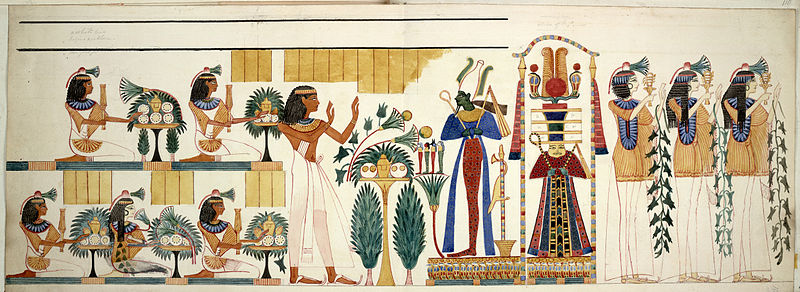Art Course in College

Back in the 60s when I was in college, an art course was required to fulfill the basic Core course requirements. I signed up for the introductory course, listed as “History of Art”. Greek sculpture had already defined my esthetic and a semester devoted to art originating in ancient Greece felt like an interesting and enjoyable choice. The required text was Janson’s History of Art which still holds a place of honor in my personal library.
Much to my chagrin, the instructor announced that since most students were, at least, somewhat familiar with Greek art, he would start the class timeline with early Christian art. I was not particularly thrilled but ended up learning a lot and vastly broadening my horizons. I was so taken with many of the mosaics, that on our first trip to Italy we visited the city of Ravenna just to see the wonderful mosaics found in the churches and tombs there.

Perspective Through the Ages
Sculptures are, of course, three-dimensional and have an enormous direct physical and aesthetic impact on the viewer which explains part of their appeal. However, paintings, murals and mosaic art present complications as efforts to depict three-dimensional scenes on a two-dimensional surface such as paper, canvas or walls, is not straightforward. The underlying concept is perspective. The origin of the word comes from the Latin perspectus meaning “clearly perceived”. This is a compound word created from per meaning “through” and specere meaning “look at” or “observe”.

Early peoples have left many works of art for us to examine. Ancient Egyptian art used certain conventions to indicate relative location and relative importance of subjects in their two-dimensional work. There is evidence from ancient Chinese, Greek and Roman art that questions of perspective were being wrestled with. Serious preliminary work with perspective began with the Italian painter Giotto (1266/7-1337) and the work was expanded by the Italian architect Filippo Brunelleschi in 1415 and his friend, the Italian Renaissance Man, Leon Battista Alberti.
While there are many other types of Linear or Point Perspective, I will discuss three:
One-point perspective where the viewer is standing directly in front of the image is probably the most familiar. In this case, images such as railroad tracks which are parallel in reality seemingly converge and disappear in the far distance. The basis for this phenomenon seems to be the increasingly small area of the receding image on the retina.


Two-point perspective exists when there are two vanishing points on the horizon from the point of view of the observer.
Aerial Perspective is regularly used in paintings. In this method, the colors of various objects in the scene helps define relative distance to the viewer. Therefore, mountains lying distantly in the background of a painting are colored in blue tones. When there are several ranges of distant mountains, the blue will become successively lighter as each more-distant range is colored in.


Another way aerial perspective is used is by making distant forms less distinct than closer images. These latter method can be seen in Chinese painting from the 8th century.
Crepuscular Rays
With this lengthy prologue, I would like to introduce one of my favorite atmospheric phenomena – that of crepuscular lighting. Derived from the Latin where crepusculum means “dusk” or “twilight”, the word sounds terrible to my ears. The name reflects the fact that this phenomenon usually occurs at sunrise or sunset. It also requires haze or dust particles in the atmosphere to cause scattering of the sun’s rays in unshadowed areas toward the observer. Sometimes known as God’s rays and used in religious paintings the effect is achieved by one-point convergence of the sun’s rays which are otherwise parallel to each other.

Anti-Crepuscular Rays
I have been lucky to see this phenomenon several times in my life, once even in my own backyard. What I did not know is that there is an accompanying phenomenon known as anticrepuscular rays. If the viewer sees the crepuscular rays and turns 180°, this phenomenon will be visible although generally dimmer than the crepuscular rays. “They originate at the sun, cross the sky to the opposite horizon and appear to converge at the antisolar point.”
I find the sky fascinating. A sunny day with cornflower-blue color is amazing. Even more spectacular is the darkening color of the sky as a storm is rolling in with its unique, penetrating quality of sunlight. Nature and her beauty literally envelops us!
If you have found this blog interesting, you might be interested in my book A Habit of Seeing: Journeys in Natural Science.

Very interesting perspective.
I am so enjoying your book on “A Habit of Seeing.” You write beautifully and enliven so many observations.